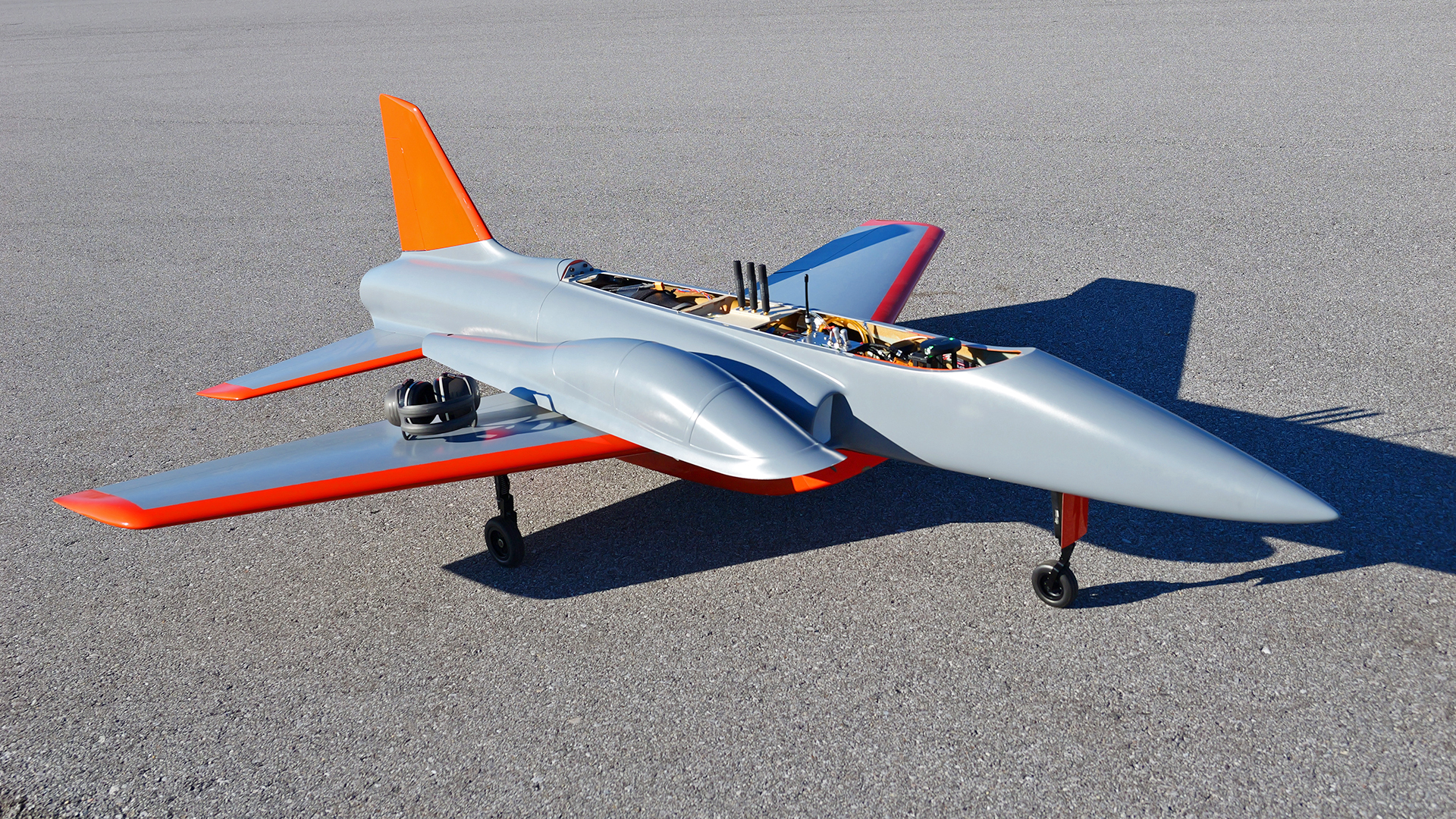Using small drones that look largely similar to the appearance of a radio-controlled hobbyist plane, the Air Force Research Laboratory (AFRL) is flight-testing various algorithms, behaviors, components, and concepts to inform the development of future weapons and air combat capabilities. While efforts like this tend to garner less attention than flashier Defense Department programs, they are nonetheless becoming a key advantage in accelerating the evolution of the U.S. military’s smart munitions and uncrewed arsenal.
Known specifically as the Networked Weapons Laboratory (NWL), the drone fabrication shop falls under the leadership of the AFRL’s Munitions Directorate, which describes itself as being “responsible for developing superior weapons technologies that are effective and affordable for our warfighter.” The NWL has existed in its current form since 2019, but the AFRL’s in-house research and development (R&D) capability to rapidly design and fabricate various small uncrewed aerial vehicles (UAV) has existed since 2005.
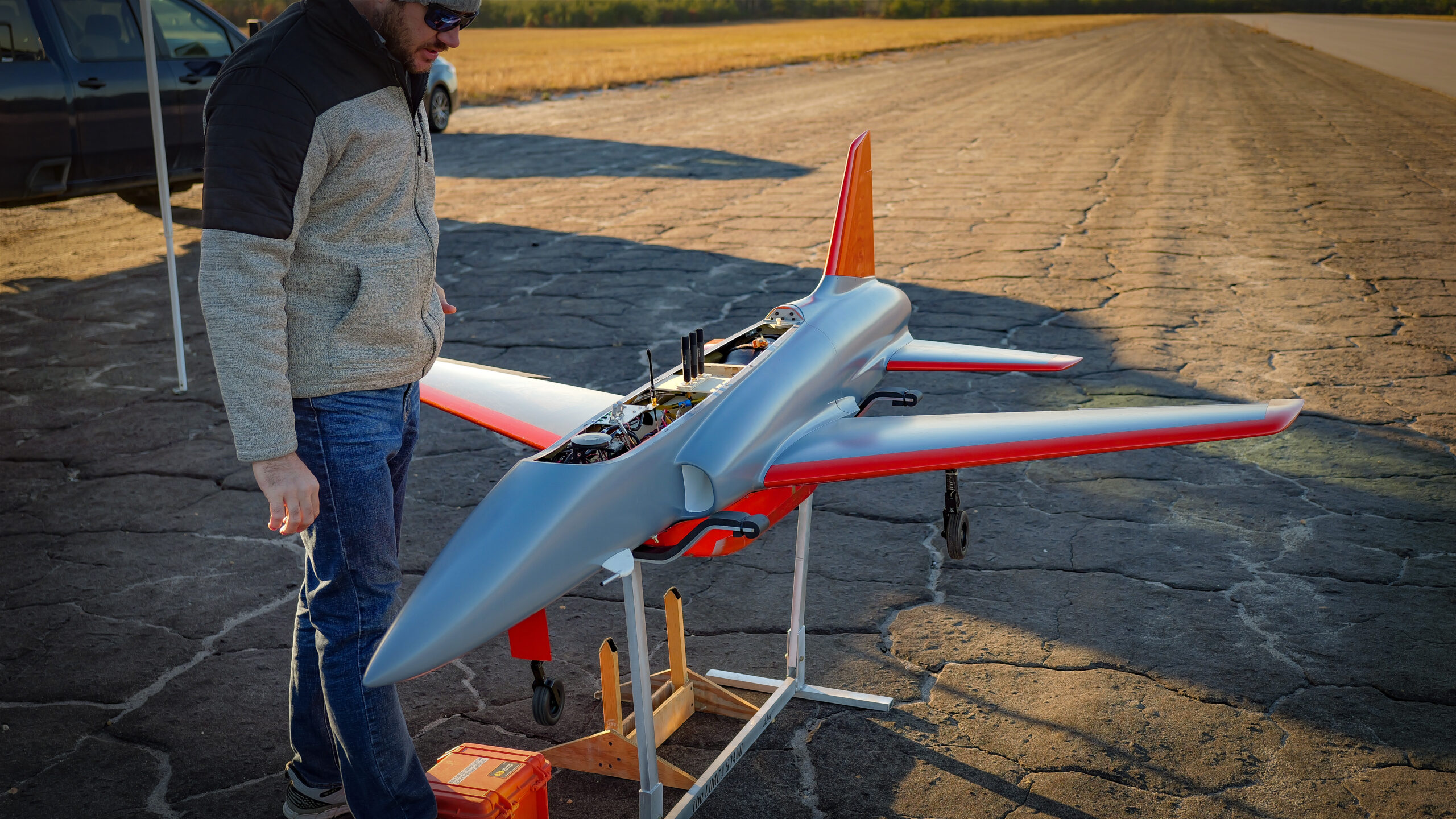
“The NWL performs research and development that is system agnostic with the goal of improving as many weapon platforms as possible, partnering with System Program Offices to transition scientific and technological advancements into currently-fielded and future systems,” Kevin O’Neal, chief of the Autonomy, Navigation, & Control branch within the AFRL’s Munitions Directorate, told The War Zone. “The NWL uses several types of UASs to represent the in-flight performance of air-to-ground and air-to-air missile systems without the cost of using current munitions for each software or network test. This allows the NWL to iterate across multiple hardware and software programs on a weekly or daily cycle instead of a few very costly flights per year.”
“The primary objective of the NWL is to integrate guidance, navigation, and control software into inexpensive UAVs in order to demonstrate the applications in live flight without being subject to a weapons hardware [size, weight, and power] constraints,” O’Neal added.
While the missiles and munitions of today are ever-advancing in capability, the weapons themselves offer limited space to test all of the sophisticated sensing, guidance, and control electronics that could potentially equip them. That’s where the NWL’s drones come in, offering a cost-effective and reusable way to evaluate these complex technologies without having to fit them inside a munition’s body or more complex platform just yet.
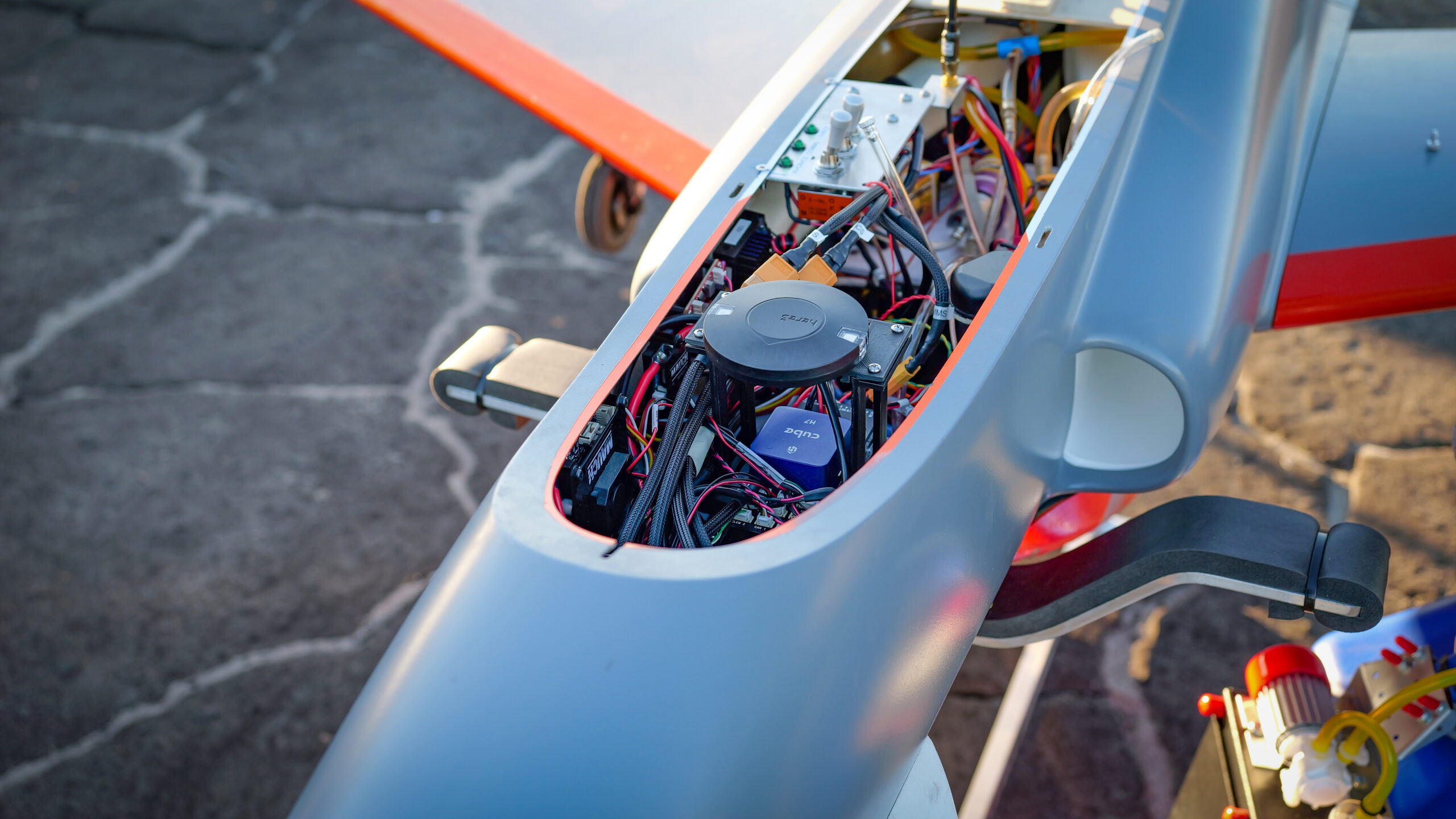
“For preliminary R&D, the use of UAVs allows for rapid testing of weapon subsystems on a reusable, low-cost platform where attrition is an acceptable risk if the specific mission warrants that tradeoff,” O’Neal said. Even for expendable munitions, this can be a huge advantage as most advanced smart weapons cost hundreds of thousands or even millions of dollars each.
However, not just any commercial off-the-shelf drones can be used for this job. Currently, the NWL focuses on three primary vehicles for the lab’s testing and experiments. Each surrogate is chosen with the specific payload that will be tested in mind, taking into consideration its size, weight, and power (SWaP) limitations.
The first of the three UAVs is a lightweight, hand-launched drone that O’Neal described as being very similar to AeroVironment’s RQ-20 Puma platform. He explained that this type of UAV allows the NWL to rapidly deploy and test certain subsystems and algorithms at various, unimproved locations.
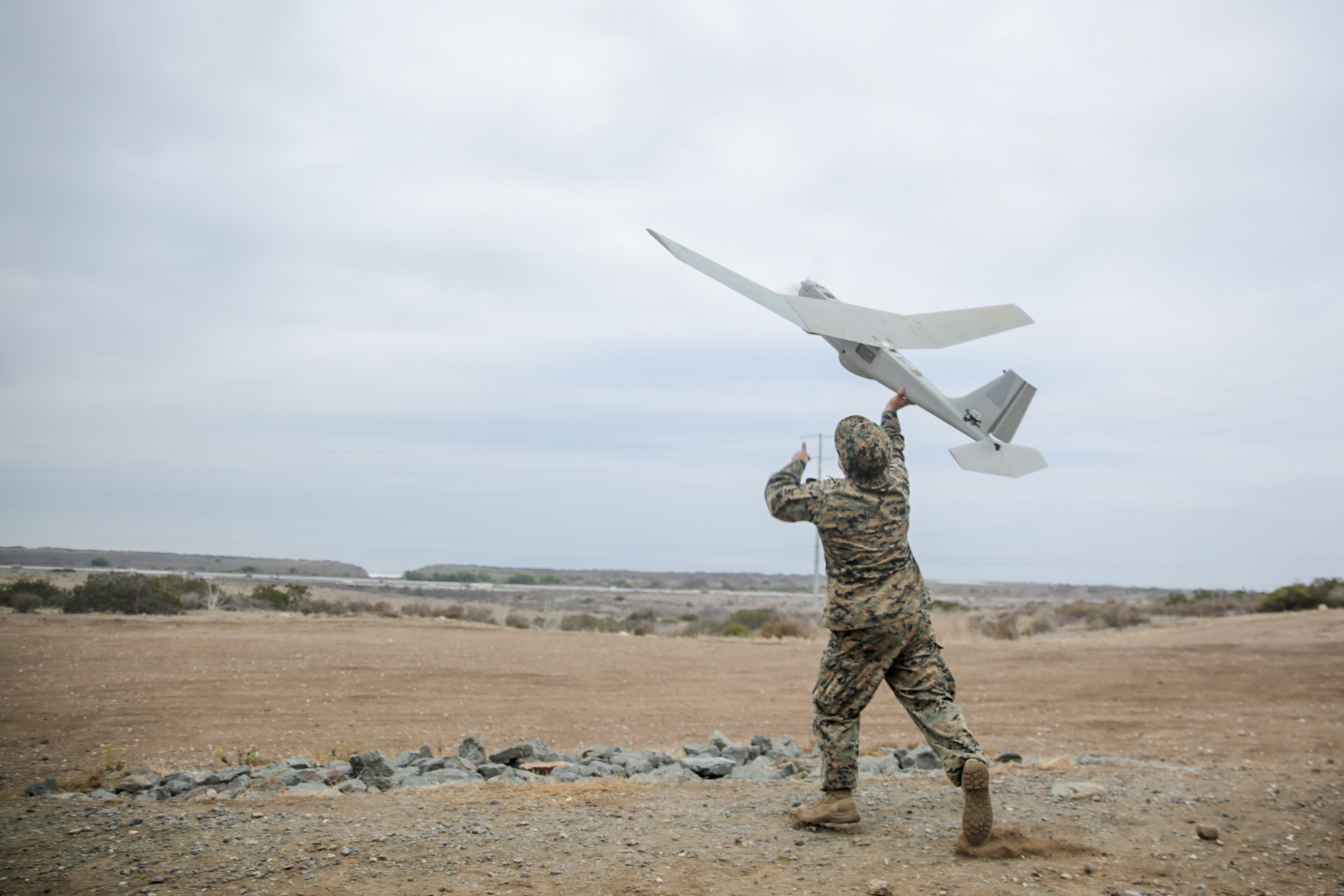
A second UAV is intended for larger payloads, and O’Neal said this type more closely resembles the RQ-7 Shadow. This vehicle provides the NWL with the ability to test payloads up to 45 pounds with a two-hour flight duration. The third UAV is leveraged for more dynamic maneuvers, with the vehicle being powered by a jet turbine and capable of carrying 30-pound payloads at speeds of 300 mph.
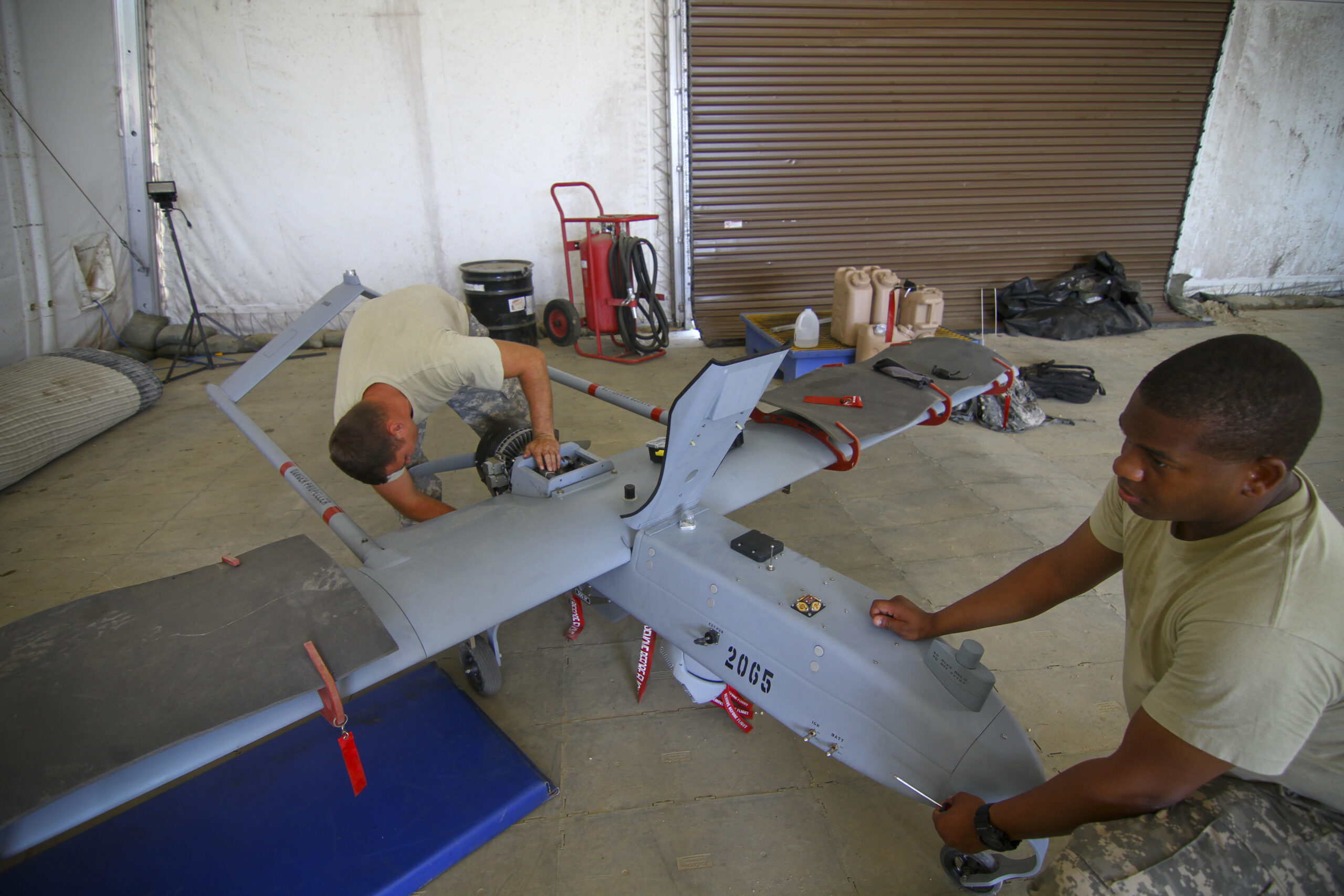
“Airframes are chosen based on their operational footprint and the technical needs of the subsystem under test,” O’Neal said. “For example, in-air testing of weapon datalinks can be conducted by smaller UAVs that are hand-launched, skid-to-land, eliminating the need for access to a runway. For larger payload testing, vehicles with a greater payload capacity are chosen. However, this adds the need for an improved runway and additional infrastructure.”
Along with testing munitions subsystems and components, another prominent focus for the NWL is using its UAVs to demonstrate networked, autonomous, and collaborative weapons concepts. In other words, the vehicles can be equipped with software and technologies that can help evaluate how an integrated network of weapon systems can share data to autonomously work together cooperatively. This, in turn, could vastly increase their lethality and survivability and opens up a whole new set of flexible tactics to employ.
“The live, virtual, and constructive capabilities of the NWL enable AFRL to conduct experiments involving onboard software that enables intelligent behaviors across a multi-agent team,” O’Neal said.
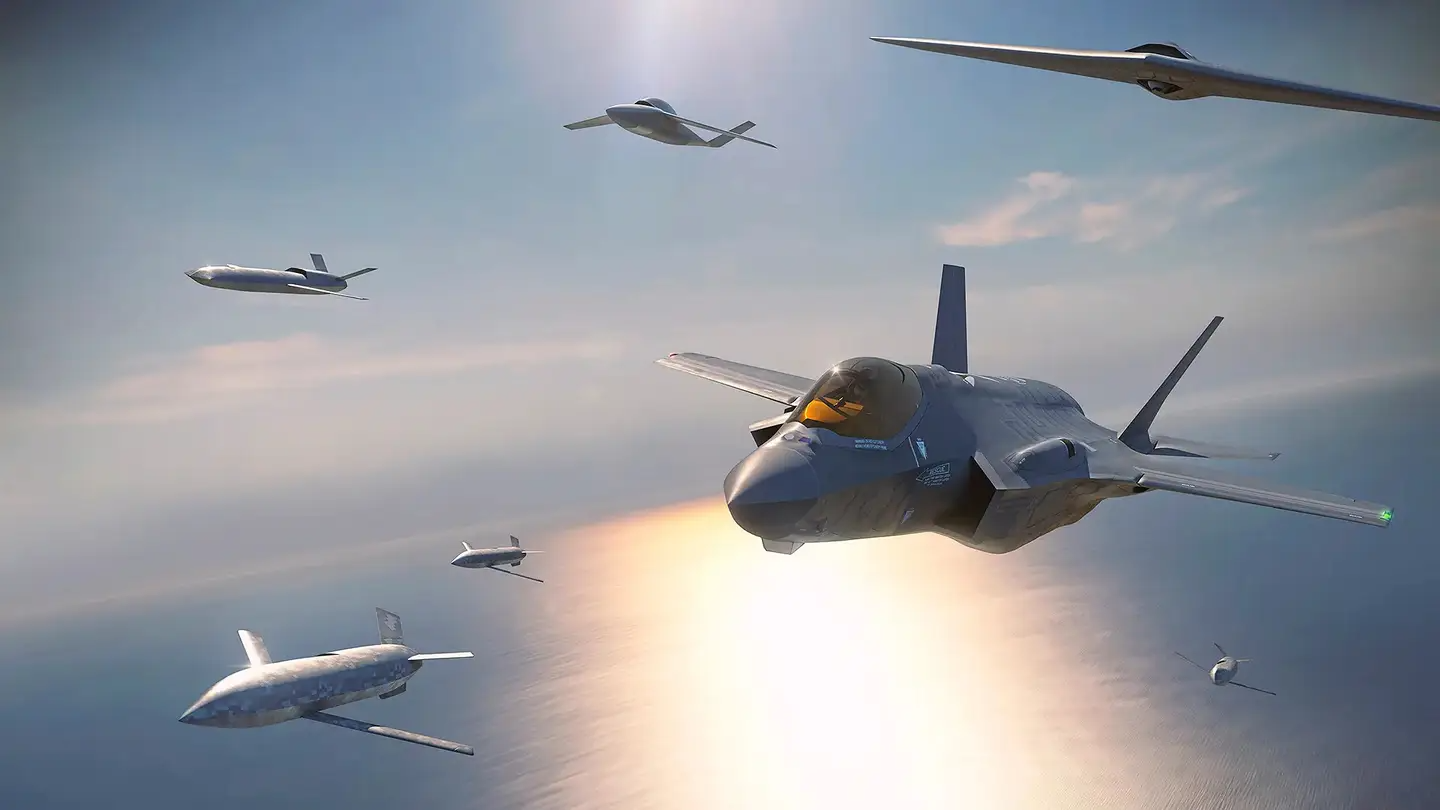
One initiative that the Air Force has introduced to explore this concept is known as Golden Horde Colosseum, which is an AFRL-led research project focused on networked swarming munitions, and the NWL is a part of it. Golden Horde falls under an overarching R&D program that the service has dubbed Vanguard, and under it, three separate efforts are also being researched known as Rocket Cargo for Agile Combat Logistics, Skyborg, and Navigation Technology Satellite-3.
The Air Force describes Vanguard as being in line with its Department of the Air Force 2030 Science and Technology Strategy, both of which broadly seek to speed up the prototyping and experimentation of advanced weapons systems and concepts. Golden Horde wants to take this underlying goal and apply it to the development of artificial intelligence (AI)-powered systems that could enable various types of precision munitions to be networked together into an autonomous swarm.

“Some of the promising approaches for multi-agent autonomy leverage machine learning techniques,” O’Neal said. “The NWL UAVs provide SWaP constraints for onboard processors to run such AI algorithms.”
O’Neal added that the NWL and its UAV surrogates conducted the flight demonstrations for the Golden Horde Colosseum demonstration in 2022. As described by the Air Force, this event utilized a multi-tier digital weapon ecosystem known as the Colosseum that essentially created a ‘sandbox’ for the development and demonstration of networked, autonomous, and collaborative technologies.

O’Neal explained that during the exercise, live assets were augmented by numerous simulated assets to conduct the mission. Both inside and outside of the Golden Horde Colosseum, conducting these kinds of evaluations with the NWL’s UAVs requires its own networking and ground control architecture.
“For testing of multi-agent autonomy, the ground control and networking architecture that ensures safety of flight and safe test execution are segregated from the higher-level machine decision processing and autonomous behavior execution,” O’Neal said. “This allows constant monitoring of test assets and safe operations while maintaining flexibility in exploring emergent behaviors for multi-agent autonomous systems.”
Golden Horde’s main focus in recent years has been developing and testing the Collaborative Small Diameter Bomb (CSDB) integrated weapon system, which the AFRL says on its website will “enable a swarm of CSDBs to share data and execute coordinated behaviors.” However, O’Neal wasn’t at liberty to comment on whether or not the NWL’s UAVs were involved in the R&D of CSDB or any other current or future munitions for that matter.
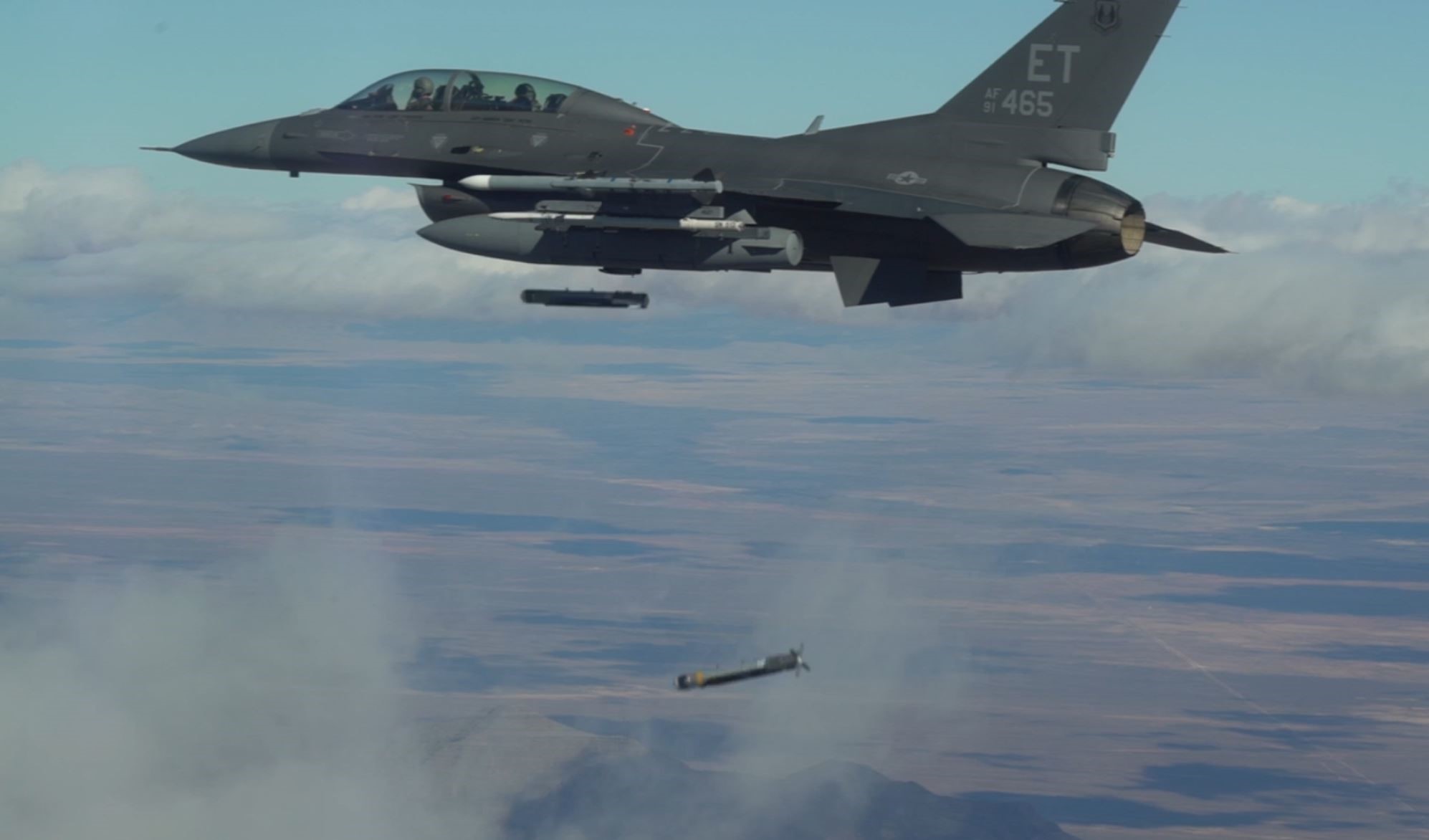
Regardless, Golden Horde and its findings have proven successful enough that the Air Force is looking to close down the effort and move it out of the experimental realm. Last November, an Air & Space Forces Magazine article, citing Kirsten J. Baldwin, deputy assistant secretary of the Air Force for science, technology, and engineering, indicated that Golden Horde would be woven into the larger Collaborative Combat Aircraft (CCA) program.
Even still, the exact plan for Golden Horde as it pertains to CCA remains unclear. Maj. Gen. Scott Jobe, director of plans, programs, and requirements for the Air Combat Command, did state in November that Golden Horde will be treated as a distinct effort from which lessons learned could be incorporated into CCA, but that its technology wasn’t 100% applicable to drones versus autonomous munitions. Fiscal Year 2024 budget documents state simply that Golden Horde will transition to the oversight of the service’s Program Executive Officer for Weapons.
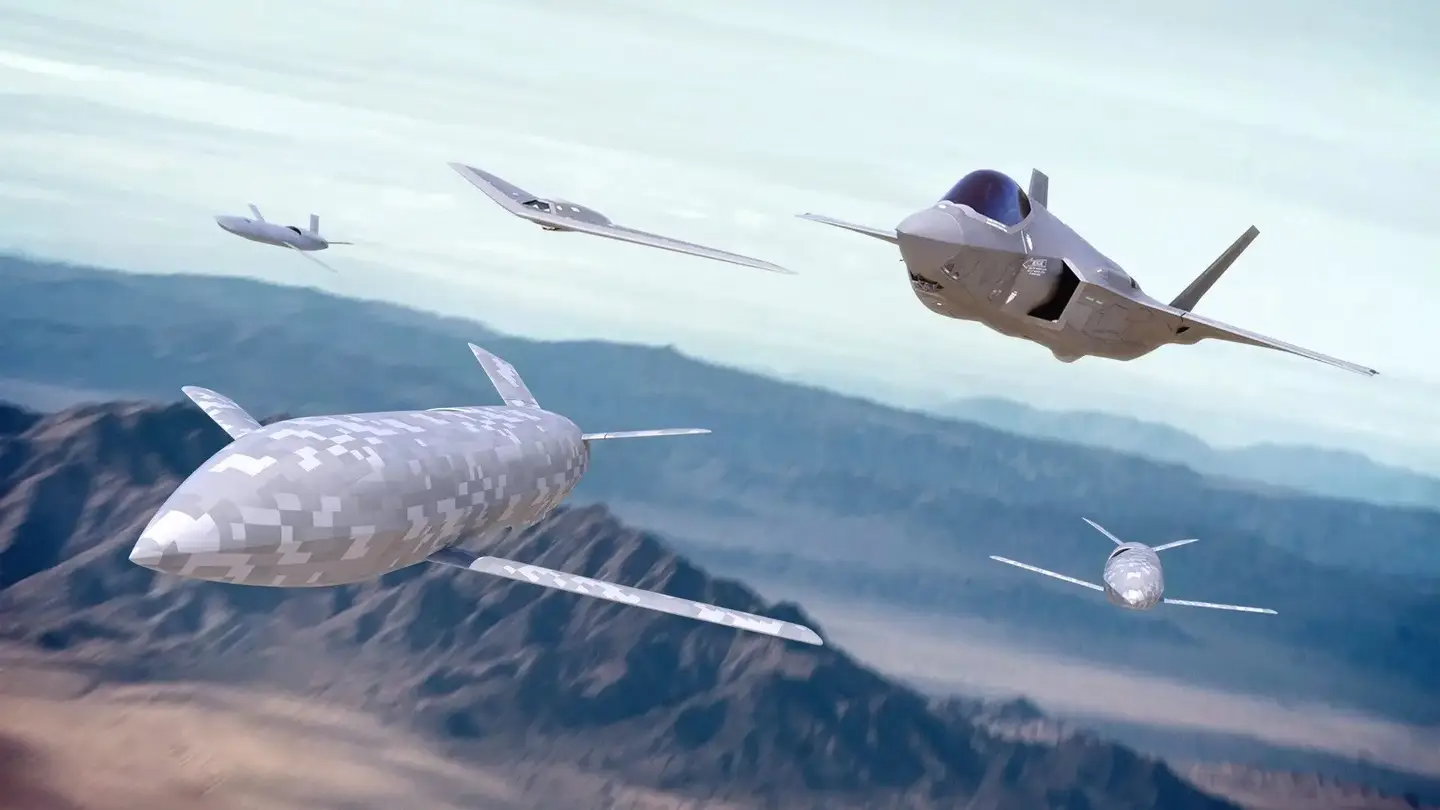
The CCA concept shares some of the same general ambitions as Golden Horde, except instead of munitions, the program envisions multiple uncrewed aircraft that can fly autonomously in connection with crewed fighters and as a swarm on their own. Baldwin was also quoted in the Air & Space Forces article as saying that a final demonstration of Golden Horde’s software specifically will be what pushes it into a program of record, but it is unclear if the NWL will be involved.
Other areas where surrogate drones like the NWL’s have been used for the R&D of multi-agent autonomy include Boeing Australia’s MQ-28 Ghost Bat Loyal Wingman program. In 2019, still prior to Ghost Bat’s rollout, Boeing Australia released a clip showing how the company was using sub-scale, jet-powered surrogate drones to conduct autonomous teamed flight testing for the MQ-28 program, which can be read about in detail here.

The footage shows the drones, which are notably similar to those used by the NWL, positioned on a runway for takeoff before launching into the sky with their jet engines roaring.

Boeing Australia at the time explained that the surrogate aircraft were being leveraged to test capabilities that would allow them to communicate and coordinate with each other while in flight, technology that would ultimately feed unto the Royal Australian Air Force’s development of its Airpower Teaming System (ATS) concept. ATS is broadly similar to the U.S. Air Force’s CCA effort.
The U.K.’s Royal Air Force (RAF) has used these kinds of surrogate drones, as well. In cooperation with Italian defense contractor Leonardo in 2020, the U.K. RAF conducted a demonstration of an autonomous drone swarm where each uncrewed aircraft used was carrying a variant of the company’s BriteCloud expendable active decoy as an electronic warfare payload.
The demonstration sought to test how the drones could use BriteCloud to disrupt ground-based radar systems representing enemy air defense installations. While the drones in this instance were known to have come from the uncrewed technology firm Callen Lenz, the idea of using small surrogate types as testbeds for technologies that could later equip future capabilities nonetheless closely mirrors the NWL’s mission.
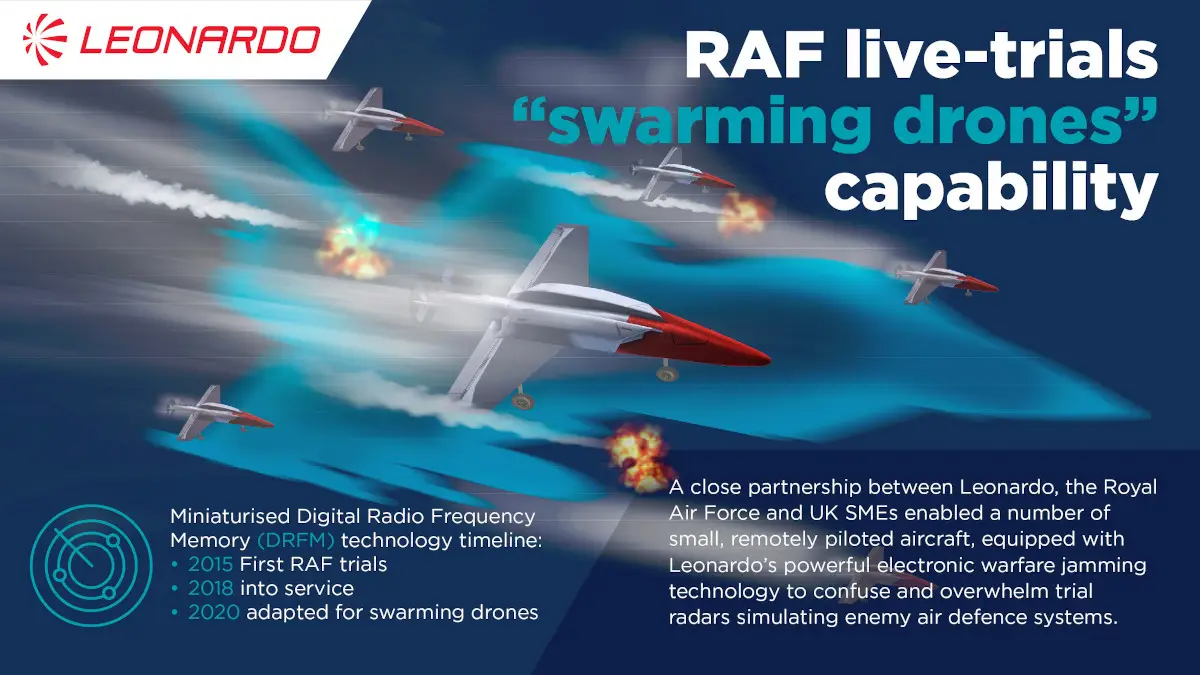
Even though the NWL can’t get into specifics about its role in the Golden Horde program or any other of its ongoing weapons development efforts, the benefit that this kind of customizable UAV R&D capability provides is clear. It lowers risk, increases the opportunity to explore advanced concepts affordably, and can speed up development, among other positives. Such capabilities will likely be increasingly leveraged as we move further into an age of autonomous swarming technologies.
Contact the author: Emma@thewarzone.com
